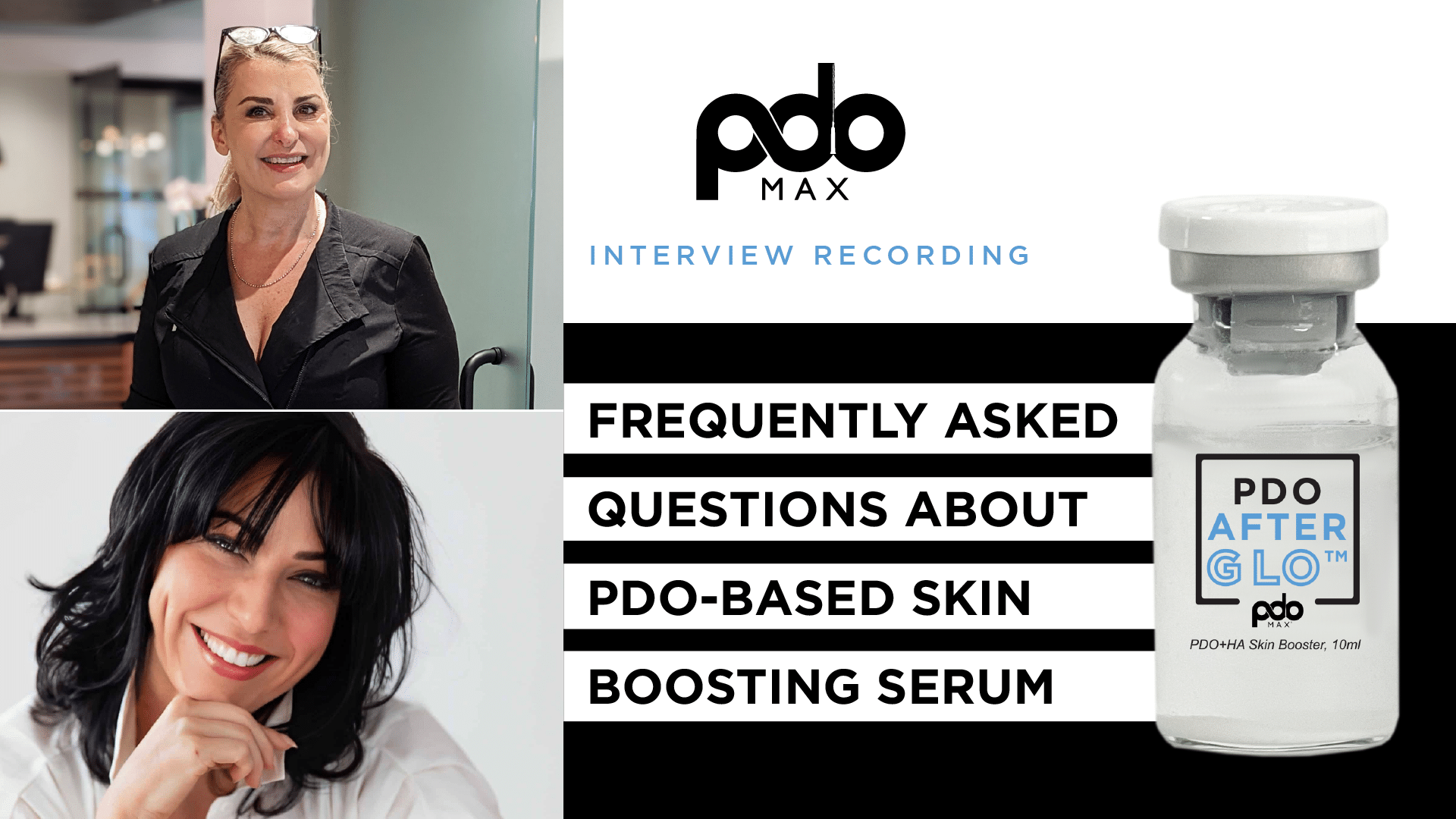PDO Max Founder Giovanna McCarthy answers frequently asked questions about PDO-based skin boosting serum. She…
Can I Exercise After a Thread Lift? (And Other Post-Procedure Questions Answered)
Download Blog Assets
Recently, thread lifts have become popular because of their minimally invasive process. The aesthetic procedure takes about 15 to 30 minutes to complete, allowing patients to schedule their appointment during their lunch breaks.
But this doesn’t mean there isn’t a recovery period. What you do during the recovery period spells the success or failure of your thread lift. When you don’t follow the post-procedure guidelines, you risk irritating the area, leading to poor results.
Make sure your FDA-approved PDO thread lifting procedure is a success by learning what not to do after you leave the clinic.
What Should You NOT Do After a Thread Lift?
Most cosmetic dermatologists and practitioners provide patients with a list of activities to avoid before and after they undergo thread lifting. Knowing why these activities are harmful to your recovery will help make the temporary lifestyle change go smoothly.
Exercise
You are advised to avoid exercising for the first two weeks after your procedure. Although walking at a moderate pace is allowed, vigorous workouts such as running, biking, and weightlifting are prohibited. These exercises cause your heart rate and blood flow to increase, which may lead to swelling and prolong the healing process.
Drink
You are advised to avoid alcoholic drinks for the first two weeks after your procedure. Alcohol is a diuretic that causes your body to flush out water and essential nutrients. It prevents your body from producing new collagen essential to the healing process. Alcohol also thins your blood, raising the risk of uncontrolled bleeding.
Sleep
You can’t put any excessive pressure on your face after a thread lift procedure. You are advised to avoid sleeping on your side and stomach for the first five to seven nights after the procedure. Doing otherwise increases your risks of swelling, bruising, and bleeding. At worst, you might end up with less-than-optimal results. Try sleeping on your back for a few weeks before the procedure to condition your body.
Makeup
You will likely be advised to go to your appointment without any makeup on. You then have to keep your skin makeup-free for the rest of the day. Your skin will be sensitive for the first 12 to 24 hours after the thread lift. It needs to breathe to prevent irritation and infection. Putting on makeup right after can suffocate the skin. Also, it can put unnecessary pressure on the treated area, causing bruising and swelling that may affect the results.
Sex
You can’t participate in sexual activities for at least a week after your procedure. Much like exercising, these activities can increase blood flow and elevate your heart rate—both of which can affect the healing process of the treated area.
What Should You Do After a Thread Lift?
There is no special post-procedure activity. Your cosmetic dermatologist or practitioner will advise you to go about your day with more care than usual. However, if you want to optimize your healing process, you may consider the following.
- Ask your practitioner for topical anesthesia if you have low pain tolerance.
- Lightly ice the treated area to decrease swelling and soreness.
- Take the day off to avoid stressors that can elevate your blood pressure.
Although thread lift procedures are minimally invasive and proven to be safe, complications and risks can still happen. Take care of the treated area and avoid the specified activities to ensure proper healing of your thread lift.

What Should You Look for in a Thread Lift?
PDO thread lifting is a highly popular aesthetic procedure, making it easy to find a clinic. But like any trendy new procedure, it has attracted inexperienced practitioners who may not have much skill yet to offer the treatment to patients. So when looking for a doctor and clinic to do your thread lift, take note of the following:
- Make sure the doctor and clinic have the appropriate licenses for the procedure.
- Make sure the doctor is experienced in conducting thread lift procedures.
- Make sure the clinic uses FDA-approved products.
- Read patient reviews (about the product and clinic) and recommendations to determine legitimacy.
- Ask to see the doctor or the clinic’s “before and after” portfolio.




